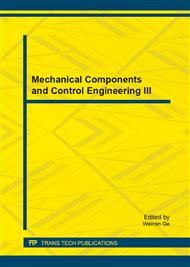p.1453
p.1458
p.1462
p.1466
p.1470
p.1476
p.1480
p.1488
p.1493
Research on Information Demand and Publishing Framework about Public Infrequent Events Based on Residents Feature
Abstract:
Traffic operation characteristics of the city gradually changed from simplicity to comprehensiveness. In this paper, different influence of episodic events was analyzing from angle of the students, commuter, retirees, according to the common accidental event types of public traffic. Combined with the SP public small sample survey, different residents requirement on information about type, location, prompting time was analyze and contingency information request form was constructed. Besides, the best information publishing channels of different groups was discussed and contingency framework was built. In addition, mobile phone APP mobile terminal was developed and the framework of information release was constructed. All in all, the goal is to solve the conflict between city residents travel demand and travel information accessibility, timeliness, accuracy, and to improve transportation efficiency.
Info:
Periodical:
Pages:
1470-1475
Citation:
Online since:
October 2014
Authors:
Price:
Сopyright:
© 2014 Trans Tech Publications Ltd. All Rights Reserved
Share:
Citation:


